Camera traps have been a key part of the conservation toolkit for decades. Remotely triggered video or still cameras allow researchers and managers to monitor cryptic species, survey populations, and support enforcement responses by documenting illegal activities. Increasingly, machine learning is being implemented to automate the processing of data generated by camera traps.
A recent study published showed that, despite being well-established and widely used tools in conservation, progress in the development of camera traps has plateaued since the emergence of the modern model in the mid-2000s, leaving users struggling with many of the same issues they faced a decade ago. That manufacturer ratings have not improved over time, despite technological advancements, demonstrates the need for a new generation of innovative conservation camera traps. Join this group and explore existing efforts, established needs, and what next-generation camera traps might look like - including the integration of AI for data processing through initiatives like Wildlife Insights and Wild Me.
Group Highlights:
Our past Tech Tutors seasons featured multiple episodes for experienced and new camera trappers. How Do I Repair My Camera Traps? featured WILDLABS members Laure Joanny, Alistair Stewart, and Rob Appleby and featured many troubleshooting and DIY resources for common issues.
For camera trap users looking to incorporate machine learning into the data analysis process, Sara Beery's How do I get started using machine learning for my camera traps? is an incredible resource discussing the user-friendly tool MegaDetector.
And for those who are new to camera trapping, Marcella Kelly's How do I choose the right camera trap(s) based on interests, goals, and species? will help you make important decisions based on factors like species, environment, power, durability, and more.
Finally, for an in-depth conversation on camera trap hardware and software, check out the Camera Traps Virtual Meetup featuring Sara Beery, Roland Kays, and Sam Seccombe.
And while you're here, be sure to stop by the camera trap community's collaborative troubleshooting data bank, where we're compiling common problems with the goal of creating a consistent place to exchange tips and tricks!
Header photo: Stephanie O'Donnell
University of Suffolk
Researcher on the 8 Primates Project
PhD student- biodiversity monitoring using acoustic data


- 0 Resources
- 2 Discussions
- 9 Groups
- @RobMCook
- | He
Ecologist specialising in human-wildlife conflict research. PhD in elephant ecology.

- 0 Resources
- 2 Discussions
- 4 Groups
- @Bistra_Dilkina
- | she/her
Assoc. Prof. of Computer Science at USC and co-director of USC Center for AI in Society. Integration of machine learning and optimization, decision making, conservation planning, wildlife corridors, climate impacts, disaster resilience, wildlife trafficking.
- 0 Resources
- 0 Discussions
- 6 Groups
- @Durgananda
- | He
- 0 Resources
- 0 Discussions
- 20 Groups
- @Amitkaushik
- | he/him/his
University of Georgia (UGA)
Environmental anthropologist; Ph.D. student in Integrative Conservation
- 0 Resources
- 1 Discussions
- 2 Groups
- @SFarber2025
- | Him
Wildlife biologist conducting annual remote camera studies in Pacific Northwest, USA
- 0 Resources
- 1 Discussions
- 1 Groups
Natural Solutions

- 0 Resources
- 13 Discussions
- 10 Groups
A wildlife ranger with over 05 years in active duty and 03 years as an active EarthRanger user down in Murchison Falls National Park , Uganda.
- 0 Resources
- 0 Discussions
- 1 Groups
- @hjayanto
- | He/Him
KONKLUSI (Kolaborasi Inklusi Konservasi - Yayasan)
Your friendly Indo-Crocky-Croc



- 0 Resources
- 44 Discussions
- 17 Groups
- @MStarking
- | she/her/hers
Ecologist and conservation researcher, currently an Assistant Professor at University of Michigan-Flint, research areas include landscape ecology, forestry and wildlife interactions, wildlife habitat relationships, spatial ecology, GIS.

- 0 Resources
- 1 Discussions
- 15 Groups
Tech for Conservation

- 0 Resources
- 2 Discussions
- 13 Groups
- @TheWildCatImagingProject
- | He/him
Founder of The Wild Cat Imaging Project, raising awareness for the wild felids in Latin America.
- 0 Resources
- 0 Discussions
- 1 Groups
I put together some initial experiences deploying the new SpeciesNet classifier on 37,000 images from a Namibian camera trap dataset and hope that sharing initial impressions might be helpful to others.
23 April 2025
A nice resource that addresses the data interoperability challenge from the GBIF.
4 April 2025
Conservation International is proud to announce the launch of the Nature Tech for Biodiversity Sector Map, developed in partnership with the Nature Tech Collective!
1 April 2025
The FLIR ONE thermal camera is a compact and portable thermal imaging device capable of detecting heat signatures in diverse environments. This report explores its application in locating wild animals across large areas...
27 March 2025
WWF's Arctic Community Wildlife Grants program supports conservation, stewardship, and research initiatives that focus on coastal Arctic ecology, community sustainability, and priority Arctic wildlife, including polar...
7 March 2025
The Smithsonian’s National Zoo and Conservation Biology Institute (SNZCBI) is seeking an intern to assist with multiple projects related to conservation technology for wildlife monitoring. SNZCBI scientists collect data...
3 March 2025
Article
NewtCAM is an underwater camera trap. Devices are getting deployed worldwide in the frame of the CAMPHIBIAN project and thanks to the support of our kind early users. Here an outcome from the UK.
24 February 2025
Osa Conservation is launching our inaugural cohort of the ‘Susan Wojcicki Research Fellowship’ for 2025, worth up to $15,000 per awardee (award value dependent on project length and number of awards given each year)....
10 February 2025
Did someone read/know this book?
9 February 2025
The worst thing a new conservation technology can do is become another maintenance burden on already stretched field teams. This meant Instant Detect 2.0 had to work perfectly from day 1. In this update, Sam Seccombe...
28 January 2025
This leads to an exciting blog we did recently, it also includes a spatial map indicating elephant movement tracks of an orphaned elephant who self released himself into the wild (Kafue National Park). Cartography was...
28 January 2025
The Zoological Society of London's Instant Detect 2.0 is the world's first affordable satellite connected camera trap system designed by conservationists, for conservationists. In this update, Sam Seccombe describes the...
21 January 2025
June 2025
July 2025
September 2024
event
58 Products
Recently updated products
4 Products
Recently updated products
| Description | Activity | Replies | Groups | Updated |
|---|---|---|---|---|
| We have spent the past 9 months taking the lessons learnt from the AMI system to build an automated moth monitoring system... |
|
Autonomous Camera Traps for Insects, Camera Traps | 17 hours 51 minutes ago | |
| Lively and informative discussion, I would very much like to contribute if there is some active development work with regards to this. I have recent experience with using... |
+31
|
Data management and processing tools, Camera Traps, Software Development | 5 days 9 hours ago | |
|
|
Latin America Community, Acoustics, AI for Conservation, Camera Traps, Drones, Early Career | 2 weeks 6 days ago | ||
| @LukeD, I am looping in @Kamalama997 from the TRAPPER team who is working on porting MegaDetector and other models to RPi with the AI HAT+. Kamil will have more specific questions. |
|
AI for Conservation, Camera Traps | 3 weeks ago | |
| Hi Ștefan! In my current case, I am trying to detect and count Arctic fox pups. Unfortunately, Arctic fox does not seem to be included in the training data of SpeciesNet but... |
+16
|
AI for Conservation, Camera Traps | 3 weeks 1 day ago | |
| Interesting. Thanks for the explanation. Nice to hear your passion showing through. |
|
AI for Conservation, Camera Traps, Data management and processing tools, Open Source Solutions, Software Development | 3 weeks 3 days ago | |
| Weeks with continuous inference would require a pretty big battery. I expect you would need some kind of customisation and maybe quite a bit of compromise to last weeks and on a... |
|
Camera Traps | 3 weeks 3 days ago | |
| 📸 Do you use camera traps in your work? Take part in our survey!Hi everyone! I’m currently a final-year engineering... |
|
Camera Traps, AI for Conservation, Data management and processing tools, Open Source Solutions, Software Development | 3 weeks 3 days ago | |
| That's great! |
|
Camera Traps | 4 weeks 1 day ago | |
| True, the US ecosystem is a challenging space right now, for basically all sectors. We should not let the US chaos prevent us from engaging with opportunities in other... |
|
AI for Conservation, Camera Traps, Connectivity, Drones, Emerging Tech, Ethics of Conservation Tech, Marine Conservation, Sensors | 1 month ago | |
| Yes, I know about this big limitation,As far as I know they are working to increase the coverage available for this solution.For trusted developers, there are more regions... |
|
Connectivity, Camera Traps | 1 month 1 week ago | |
| Hi, just wanted to let whoever is interested that v.1.3 of DeepFaune is out! Deepfaune is a software that runs on any standard... |
|
Camera Traps, AI for Conservation, Open Source Solutions | 1 month 1 week ago |
Mammal responses to global changes in human activity vary by trophic group and landscape
3 April 2024 4:52pm
Blind Spots in Conservation Tech Management in Remote Landscapes: Seeking Your Input
20 March 2024 10:51am
30 March 2024 3:57pm
Hi @Alasdair
Great to hear from you! Thanks for the comment and for those very useful links (very interesting). And for letting @Rob_Appleby know. I can't wait to hear from her.
Open source is my preference as well. And it's a good idea. But, already developing the tech in house is a step ahead from what would be the basic functional application of an organization that could manage the tech for a whole country/region.
I have witnessed sometime how tech have not added much to the efficiency of local teams but instead being an tool to promote the work of NGOs. And because of that then innovative technologies are not developed much further that a mere donation (from the local team's perspective). But for that tech to prove efficient, a lot more work on the field have to be done after. The help of people with expertise in the front line with lots of time to dedicate to the cause is essential (this proves too expensive for local NGOs and rarely this aspect is consider).
I imagine this is something that needs to come from the side closer to the donors and International NGOs. Ideally only equipment can be lend within a subscription model and not just donated without accountability on how that tech is use. Effectively the resources can be distributed strategically over many projects. Allowing to tech to be repurposed.
Sorry that I step down the technical talk, the thing is that sometimes the simplest things can make the most impact.
It would be good to know if any in the community that have spent considerable time working in conservation in remote regions, and have observed similar trends.
Thanks! Luciano
Applying Open-Source AI to Camera Trap Imagery
27 March 2024 4:34pm
How does behavior influence the use of technology for animal detection ?
22 March 2024 7:49pm
The Variety Hour: 2024 Lineup
22 March 2024 4:30pm
2 Postdoctoral Conservation Ecologist Positions at Smithsonian’s National Zoo and Conservation Biology Institute (SNZCBI)
14 March 2024 7:18pm
Using citizen science image analysis to measure seabird phenology
13 March 2024 9:32pm
Free AI Camera Trap Model for European Fauna!
12 March 2024 12:33pm
Here's what you missed at World Wildlife Day 2024
7 March 2024 9:02pm
15 March 2024 2:42pm
EcoAssist - Free African species identification model for 30 species!
5 March 2024 5:10pm
1 April 2024 6:04pm
Canopy Camera Trap for Indonesian Lizards
27 February 2024 9:20pm
28 February 2024 1:18pm
Hi Andrew! Great to hear your friend, Scott working in Indonesia! I bet he is working on east region with lot of cool monitor lizards!
I use Mavic 2 as well for my crocodile research in place with dense canopy and yes it was tricky! I would suggest to try DJI Avata may be better to do this task. Or maybe try equip propeller guard on the Mavic?
Would be it possible for the drone setting up the rope and after that the camera lift up using rope and slap to your desire place? just an idea, but in OZ they use drone carrying long rope to caught the crocodile, when it caught, the drone will release the rope and shift to people to work.
Timelapse Infrared Camera Suggestions
14 February 2024 1:54am
24 February 2024 6:18am
I doubt there is an off the shelf solution. Likely you will have to build one. Again I think the FLIR leptons could be of value here.
@krasi_georgiev you have worked with Leptons before ? Is this something you are able to advise on ?
25 February 2024 1:11pm
Ah yes. I didn’t notice that. Indeed it’s “near infrared”, 850nm lighting.
Camera Traps batteries waste
11 December 2023 5:49am
16 February 2024 2:47am
Thanks for the update @Frank_van_der_Most . I have been curious about the AA Li-Ion/Li-Po batteries and how they perform. The sudden drop in reported voltage will likely be from the internal voltage regulator switching off when the internal cell gets to the low voltage threshold (usually around 3V) to avoid damage to the cell. Looking now at a discharge curve they show a constant 1.5V, then a step down to 1.1V before dropping to zero. I don't know how you can possibly test these externally to know how much energy they have left until you hit the 1.1V step.
18 February 2024 8:28pm
Hi Alistair @alsnothome , see the comments of @Amanda_Matthes at the post here. Basically, it is not easy
23 February 2024 11:11pm
I've used AA rechargeable almost exclusively for many years now. I try to get rechargeables sourced from Japan (Panasonic Eneloop and Fujitsu), but have also used Eveready and EBL. I've used them in Reconyx, Scoutguard, Loreda and other low end cameras. One option you could try if it's in your budget is the solar powered camera traps. You need one set of rechargeables when you first deploy them but don't need to change the batteries afterwards. I'm trialling the Gardepro model that a local supplier sells. I intend to deploy them high up in trees to monitor nest boxes and tree hollows, so regular access to change batteries and SD cards was going to be difficult.
Li-ion rechargeable batteries suddenly drain
2 February 2024 6:13pm
15 February 2024 9:26am
Hi Frank,
Yes, I agree. There is a halfway-house solution if you take a look at the Energizer Ultimate Lithium range of batteries. They have superior life to alkaline batteries (3.5Ah in a single AA cell), though they are of course still one-time use. They would also work a little better with your battery monitor since they have a graceful degradation between 1.8V down to 1.5V, but then they fall off a cliff ;-)
16 February 2024 1:00pm
A multi meter would probably not be enough, unless you have a very fancy one. To get the energy use, you need to be able to integrate the current drawn over time. Something like this: Otii Arc Pro
I don't know how much you paid for these, but Amazon Basics has a line of rechargeable AA batteries, including a high capacity version which can store 2400 mAh which is a little more than the ones you're using. (I've seen even more capacity with other manufacturers.)
You might also want to consider avoiding batteries with USB ports in the future. It seems to me like just an additional thing that can break, especially if moisture could be an issue.
18 February 2024 8:20pm
Thanks for the link, Amanda. The price of $900 is a bit too steep for me, but at least I now know a bit better what you meant with a power analyser.
I can't remember either what I paid for the batteries, but I try to avoid buying stuff from mr. Bezos, because he is rich enough as far as I am concerned.
The moisture issue slipped my mind when I was in Europe. As far as I remember, I liked the usb ports because I bought the batteries as a test and I didn't want to buy a separate charger, as I thought one needed one designed for Li-ion batteries. The usb ports made that possible.
Tools for automating image augmentation
26 January 2024 2:33pm
16 February 2024 7:42am
Hi @arky !
Thanks for your reply.
I am running into pytorch/torchvision incompatibility issues when trying to run your script.
Which versions are you using?
Best regards,
Lars
18 February 2024 11:05am
@Lars_Holst_Hansen Here is the information you requested. Also run Yolov8 in multiple remote environments without any issues. Perhaps you'll need to use a virtual environment (venv et al) or conda to remedy incompatibility issues.
$ yolo checks
Ultralytics YOLOv8.1.4 🚀 Python-3.10.12 torch-1.13.1+cu117 CUDA:0 (Quadro T2000, 3904MiB)
Setup complete ✅ (16 CPUs, 62.5 GB RAM, 465.0/467.9 GB disk)
OS Linux-6.5.0-17-generic-x86_64-with-glibc2.35
Environment Linux
Python 3.10.12
Install pip
RAM 62.54 GB
CPU Intel Core(TM) i7-10875H 2.30GHz
CUDA 11.7
matplotlib ✅ 3.5.1>=3.3.0
numpy ✅ 1.26.3>=1.22.2
opencv-python ✅ 4.7.0.72>=4.6.0
pillow ✅ 10.2.0>=7.1.2
pyyaml ✅ 6.0.1>=5.3.1
requests ✅ 2.31.0>=2.23.0
scipy ✅ 1.11.4>=1.4.1
torch ✅ 1.13.1>=1.8.0
torchvision ✅ 0.14.1>=0.9.0
tqdm ✅ 4.66.1>=4.64.0
psutil ✅ 5.9.8
py-cpuinfo ✅ 9.0.0
thop ✅ 0.1.1-2209072238>=0.1.1
pandas ✅ 1.5.3>=1.1.4
seaborn ✅ 0.12.2>=0.11.0
18 February 2024 11:18am
Perfect thanks! I am still a novice using Python but my wife can help me!
Post-doc possition - Field spanning movement ecology, ecology of fear, bio-logging science, behavioral ecology, and ecological statistics
10 February 2024 7:20am
Improving camera traps for monitoring mustelids
8 February 2024 7:35pm
Southern African Wildlife Management Association Conference 2024
6 February 2024 12:20pm
Passionate engineer offering funding and tech solutions pro-bono.
23 January 2024 12:06pm
26 January 2024 3:18pm
Hi Krasi! Greetings from Brazil!
That's a cool journey you've started! Congratulations. And I felt like theSearchLife resonates with the work I'm involved round here. In a nutshell, I live at the heart of the largest remaining of Atlantic forest in the planet - one of the most biodiverse biomes that exist. The subregion where I live is named after and bathed by the "Rio Sagrado" (Sacred River), a magnificent water body with a very rich cultural significance to the region (it has served as a safe zone for fleeing slaves). Well, the river and the entire bioregion is currently under the threat of a truly devastating railroad project which, to say the least is planned to cut through over 100 water springs!
In face of that the local community (myself included) has been mobilizing to raise awareness of the issue and hopefully stop this madness (fueled by strong international forces). One of the ways we've been fighting this is through the seeking of the recognition of the sacred river as an entity of legal rights, who can manifest itself in court, against such threats. And to illustrate what this would look like, I've been developing this AI (LLM) powered avatar for the river, which could maybe serve as its human-relatable voice. An existing prototype of such avatar is available here. It has been fine-tuned with over 20 scientific papers on the Sacred River watershed.
And right now myself and other are mobilizing to manifest the conditions/resources to develop a next version of the avatar, which would include remote sensing capacities so the avatar is directly connected to the river and can possibly write full scientific reports on its physical properties (i.e. water quality) and the surrounding biodiversity. In fact, myself and 3 other members of the WildLabs community have just applied to the WildLabs Grant program in order to accomplish that. Hopefully the results are positive.
Finally, it's worth mentioning that our mobilization around providing an expression medium for the river has been multimodal, including the creation of a shortfilm based on theatrical mobilizations we did during a fest dedicated to the river and its surrounding more-than-human communities. You can check that out here:
Let's chat if any of that catches your interest!
Cheers!
2 February 2024 1:22pm
Hi Danilo. you seem very passionate about this initiative which is a good start.
It is an interesting coincidence that I am starting another project for the coral reefs in the Philipines which also requires water analytics so I can probably work on both projects at the same time.
Let's that have a call and discuss, will send you a pm with my contact details
There is a tech glitch and I don't get email notifications from here.
Underwater camera trap - call for early users
13 December 2023 11:44pm
23 January 2024 1:21pm
Many thanks for your contribution to the survey! We are now summarizing the list of early users and making our best to propose a newtcam to all in due time.
All the best!
Xavier
30 January 2024 10:20pm
Is there still time to apply?
31 January 2024 12:12pm
Hi Danilo, yes just in time ;-)
Jupyter Notebook: Aquatic Computer Vision
25 January 2024 5:50am
26 January 2024 1:46pm
This is quite interesting. Would love to see if we could improve this code using custom models and alternative ways of processing the video stream.
27 January 2024 4:07am
This definitely seems like the community to do it. I was looking at the thread about wolf detection and it seems like people here are no strangers to image classification. A little overwhelming to be quite honest 😂
While it would be incredible to have a powerful model that was capable of auto-classifying everything right away and storing all the detected creatures & correlated sensor data straight into a database - I wonder if in remote cases where power (and therefore cpu bandwidth), data storage, and network connectivity is at a premium if it would be more valuable to just be able to highlight moments of interest for lab analysis later? OR if you do you have cellular connection, you could download just those moments of interest and not hours and hours of footage?
27 January 2024 6:11am
Am working on similar AI challenge at the moment. Hoping to translate my workflow to wolves in future if needed.
We all are little overstretched but it there is no pressing deadlines, it should be possible to explore building efficient model for object detection and looking at suitable hardware for running these model on the edge.
Replacement screen for Bushnell cameratrap
17 January 2024 9:01pm
20 January 2024 11:58pm
Hey Lucy!
You should be able to pick up a small piece of infrared emitting plastic online for super cheap that would allow for the IR lights to pass through, but block UV from coming in. Anything should be able to be glued and sealed using expoy, which shouldn't damage any electronic components, but will ensure weatherproofing.
Goodluck!
Best,
Travis
21 January 2024 12:42am
Hi Travis,
Thanks for the advice. I will give it a go.
Lucy
26 January 2024 2:20pm
I have fixed Bushnell TrophyCam IR windows with plastic cut from the bottom of a supermarket fruit package. Any thin, clear plastic will be OK. I stuck it in with silicone, but make sure you get the neutral cure type that does not emit acetic acid as it sets.
Need advice - image management and tagging
12 January 2024 7:55pm
15 January 2024 8:47pm
Interesting, Iʻll give it a shot. Looks like this could save me some time.
Thanks for the explanation @wade!
24 January 2024 5:16pm
I have no familiarity with Lightroom, but the problem you describe seems like a pretty typical data storage and look up issue. This is the kind of problem that many software engineers deal with on a daily bases. In almost every circumstance this class of problem is solved using a database.
In fact, a potentially useful analysis is that the Lightroom database is not providing the feature set you need.
It seems likely that you are not looking for a software development project, and setting up you own DB would certainly require some effort, but if this is a serious issue for your work, you hope to scale your work up, or bring many other participants into your project, it might make sense to have an information system that better fits your needs.
There are many different databases out there optimized for different sorts of things. For this I might suggest taking a look at MongoDB with GridFS for a couple of reasons.
- It looks like you meta data is in JSON format. Many DBs are JSON compatible, but Mongo is JSON native. It is especially good at storing and retrieving JSON data. Its JSON search capabilities are excellent and easy to use. It looks like you could export your data directly from Lightroom into Mongo, so it might be pretty easy actually.
- Mongo with the GridFS package is an excellent repository for arbitrarily large image files.
- It is straightforward to make a Mongo database accessible via a website.
- They are open source (in a manner of speaking) and you can run it for free.
Disclaimer: I used to work for MongoDB. I don't anymore and I have no vested interest at all, but they make a great product that would really crush this whole class of problem.
25 January 2024 8:32am
Hi!
I would take a look at
Although developed for camera trap imagery, it is by no means restricted to such.
Cheers,
Lars
Cheap camera traps with "Timelapse+" mode?
20 July 2023 3:09pm
7 August 2023 2:57pm
Thank you @mguins and @NickGardner for your praise and addition. I had not thought of the backup possibility, but it sure is a good point, Michelle. I find it amazing how often one reads about and experiences camtrap malfunction. Even the relatively cheap ones are still quite a lot of money for what is, at the end of the day, a relatively simple piece of electronics and a plastic container.
12 August 2023 6:41am
Frank's idea of using 2 camera traps is inspired!
I've fiddled with cheap camera traps a bit, and some (most?) of them use a low power, inaccurate timer for the time lapse function instead of the accurate real time clock. This is ok for Michelle's purpose, but not for Nick's as he needs to specify the exact time of day to trigger.
I made this interface to allow a camera trap to be triggered by an external device. To it you could attach, say, a timer programmed to fire at the desired times, to cause a capture. A $4 DS3231 RTC module could do the job, after the alarm times have been programmed into it with , for example, an Arduino.
17 January 2024 5:56pm
Hi Nick,
Any update from your project? did you find good price value Camera Traps?
We in Indonesia don't have local suppliers for any research grade Camera Traps like Bushnell, Browning or Reconyx. So we need to import them and the price inflated a lot even without the distributor. So, me and my team recently use the China model like GardePro or Meidase one ($40-60). Though we bought it in the US in small quantity if some of our friends travel back to Indonesia. They have more feature than typical Bushnell with same price range. The images are AI upscale, but doesn't really bother us. So I am curious if you found any good Camera Traps to recommend? Thanks!
Cheers,
Dhanu
Using "motion extraction" for animal identification
16 January 2024 3:46pm
17 January 2024 2:54am
Hi Dhanu,
Our group moved to Wildlife Insights a few years back (for a few reasons but mostly ease of data upload/annotation by multiple users) so I haven't tried EcoAssist. This being said, I will look into it as a pre-WildlifeInsights filter to analyze the tens of thousands of images that get recorded when camera traps start to fail, or get confused with sun spots (which can be common at one of our sites, a south-facing slope with sparse canopy cover).
Thanks for sharing!
17 January 2024 5:16am
You are most welcome.
I can only highly recommend joining the online events! They are really inspiring.
- and it is great to "meet" and chat with fellow WildLabbers during the "after hours".
17 January 2024 4:22pm
Very nice video in the link you posted btw:
Here is another less artistic one:
Wildlife Conservation for "Dummies"
9 January 2024 10:02pm
10 January 2024 11:24pm
Maybe this is obvious, but maybe it's so obvious that you could easily forget to include this in your list of recommendations: encourage them to hang out here on WILDLABS! I say that in all seriousness: if you get some great responses here and compile them into a list, it would be easy to forget the fact that you came to WILDLABS to get those responses.
I get questions like this frequently, and my recommended entry points are always (1) attend the WILDLABS Variety Hour series, (2) lurk on WILDLABS.net, and (3) if they express a specific interest in AI, lurk on the AI for Conservation Slack.
I usually also recommend that folks visit the Work on Climate Slack and - if they live in a major city - to attend one of the in-person Work on Climate events. You'll see relatively little conservation talk there, but conservation tech is just a small subset of sustainability tech, and for a new person in the field, if they're interested in environmental sustainability, even if they're a bit more interested in conservation than in other aspects of sustainability, the sheer number of opportunities in non-conservation-related climate tech may help them get their hands dirty more quickly than in conservation specifically, especially if they're looking to make a full-time career transition. But of course, I'd rather have everyone working on conservation!
13 January 2024 3:14am
Some good overview papers I'd recommend include:
- Besson, M., Alison, J., Bjerge, K., Gorochowski, T. E., Høye, T. T., Jucker, T., ... & Clements, C. F. (2022). Towards the fully automated monitoring of ecological communities. Ecology Letters, 25(12), 2753-2775.
- Speaker, T., O'Donnell, S., Wittemyer, G., Bruyere, B., Loucks, C., Dancer, A., ... & Solomon, J. (2022). A global community‐sourced assessment of the state of conservation technology. Conservation Biology, 36(3), e13871.
- WILDLABS-led research! Led by @TaliaSpeaker and @StephODonnell
- Lahoz-Monfort, J. J., & Magrath, M. J. (2021). A comprehensive overview of technologies for species and habitat monitoring and conservation. BioScience, 71(10), 1038-1062.
- Tuia, D., Kellenberger, B., Beery, S., Costelloe, B. R., Zuffi, S., Risse, B., ... & Berger-Wolf, T. (2022). Perspectives in machine learning for wildlife conservation. Nature communications, 13(1), 792.
- Stowell, D. (2022). Computational bioacoustics with deep learning: a review and roadmap. PeerJ, 10, e13152.
- I'm biased towards bioacoustics because that's what I focus on, but this regardless this is an excellent horizon scan of AI/ML for conservation and acoustics!
- Borowiec, M. L., Dikow, R. B., Frandsen, P. B., McKeeken, A., Valentini, G., & White, A. E. (2022). Deep learning as a tool for ecology and evolution. Methods in Ecology and Evolution, 13(8), 1640-1660.
I'd also encourage you to follow the #tech4wildlife hashtags on social media!
15 January 2024 4:27pm
I'm also here for this. This is my first comment... I've been lurking for a while.
I have 20 years of professional knowledge in design, with the bulk of that being software design. I also have a keen interest in wildlife. I've never really combined the two; and I'm starting to feel like that is a waste. I have a lot to contribute. The loss of biodiversity is terrifying me. So I’m making a plan that in 2024 I’m going to combine both.
However, if I’m honest with you – I struggle with where to start. There are such vast amounts of information out there I find myself jumping all over the place. A lot of it is highly scientific, which is great – but I do not have a science background.
As suggested by the post title.. a “Wildlife Conservation for Dummies” would be exactly what I am looking for. Because in this case I’m happy to admit I am a complete dummy.
HWC Tech Challenge update 2020
Testing Raspberry Pi cameras: Results
5 May 2023 5:11pm
5 September 2023 8:16am
And finally for now, the object detectors are wrapped by a python websocket network wrapper to make it easy for the system to use different types of object detectors. Usually, it's about 1/2 a day for me to write a new python wrapper for a new object detector type. You just need to wrap in the network connection and make it conform to the yolo way of expressing the hits, i.e. the json format that yolo outputs with bounding boxes, class names and confidence level.
What's more, you can even use multiple object detector models in different parts of a single captured image and you can cascade the logic to require multiple object detectors to match for example, or a choice from different object detectors.
It's the perfect anti-poaching system (If I say so myself :) )
10 January 2024 11:47pm
Hey @kimhendrikse , thanks for all these details. I just caught up. I like your approach of supporting multiple object detectors and using the python websockets wrapper! Is your code available somewhere?
11 January 2024 6:02am
Yep, here:
Currently it only installs on older Jetsons as in the coming weeks I’ll finish the install code for current jetsons.
Technically speaking, if you were an IT specialist you could even make it work in wsl2 Ubuntu on windows, but I haven’t published instructions for that. If you were even more of a specialist you wouldn’t need wsl2 either. One day I’ll publish instructions for that once I’ve done it. Though it would be slow unless the windows machine had an NVidia GPU and you PyTorch work with it.
ReWilding Europe a Data Annotation Pipeline for training models [code and model weights]
2 January 2024 6:05am


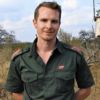




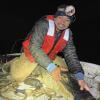



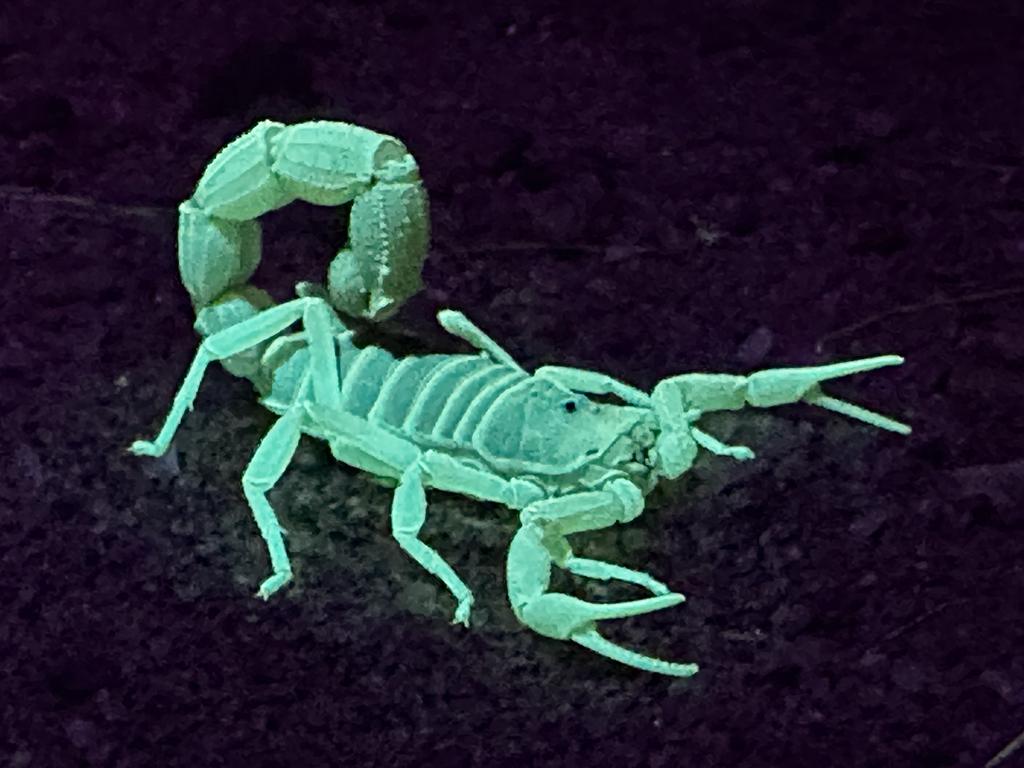




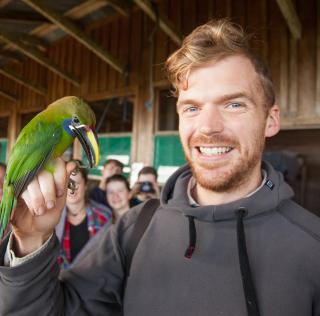
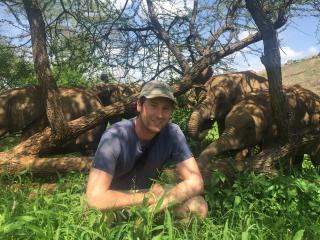
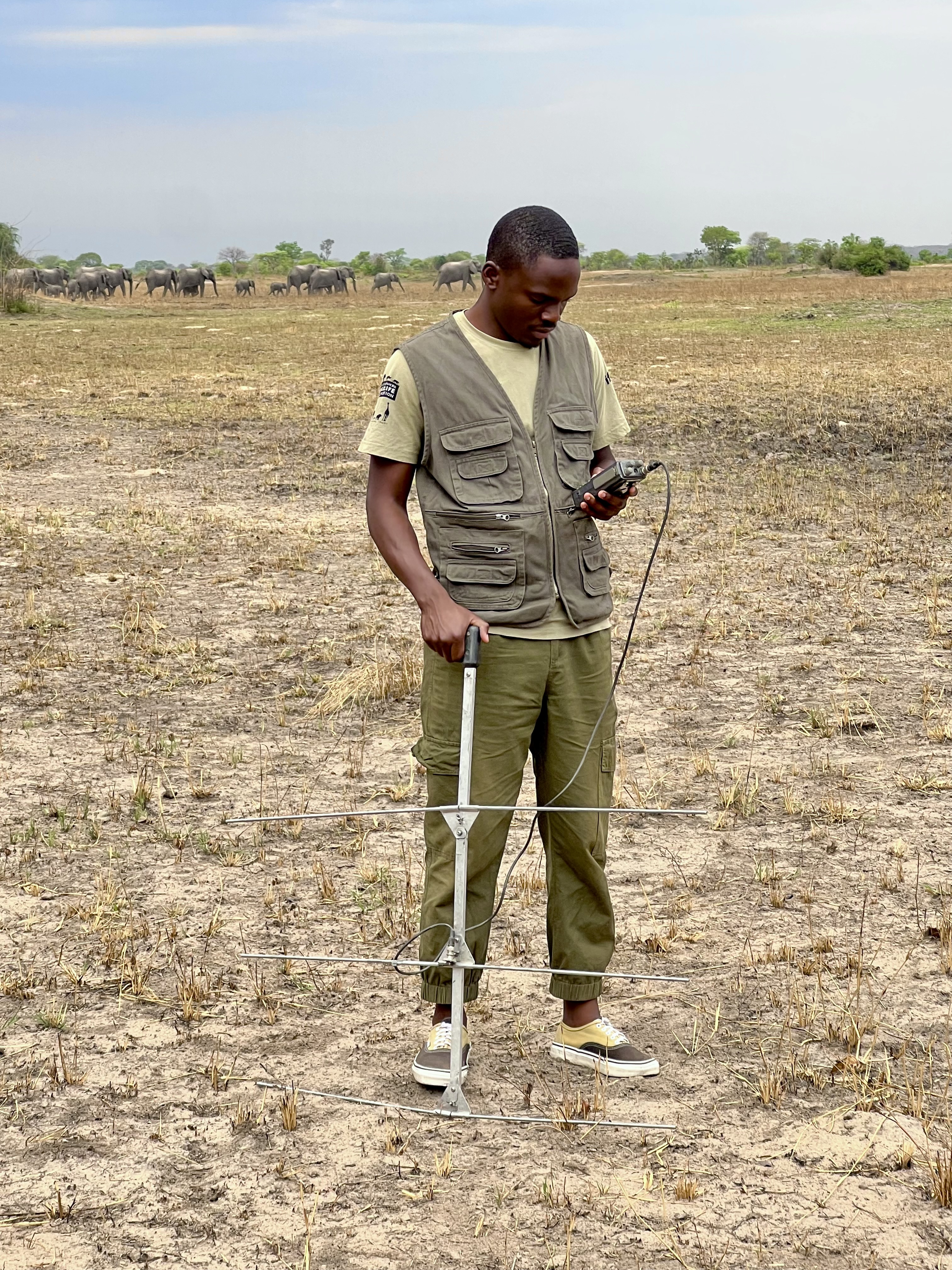





















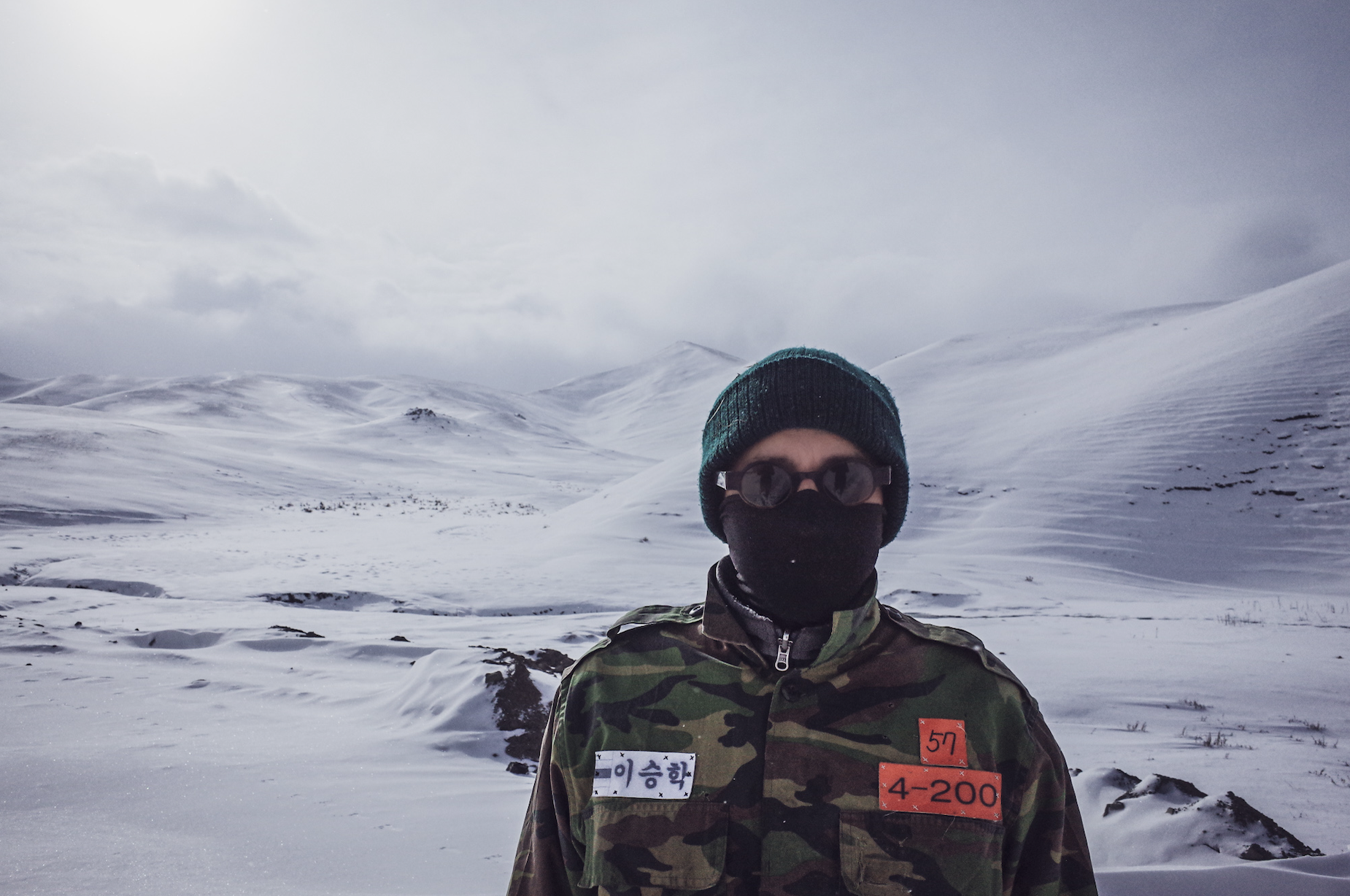




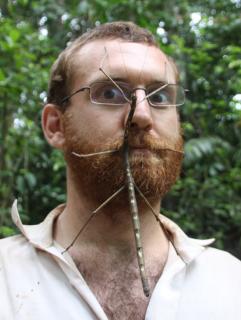













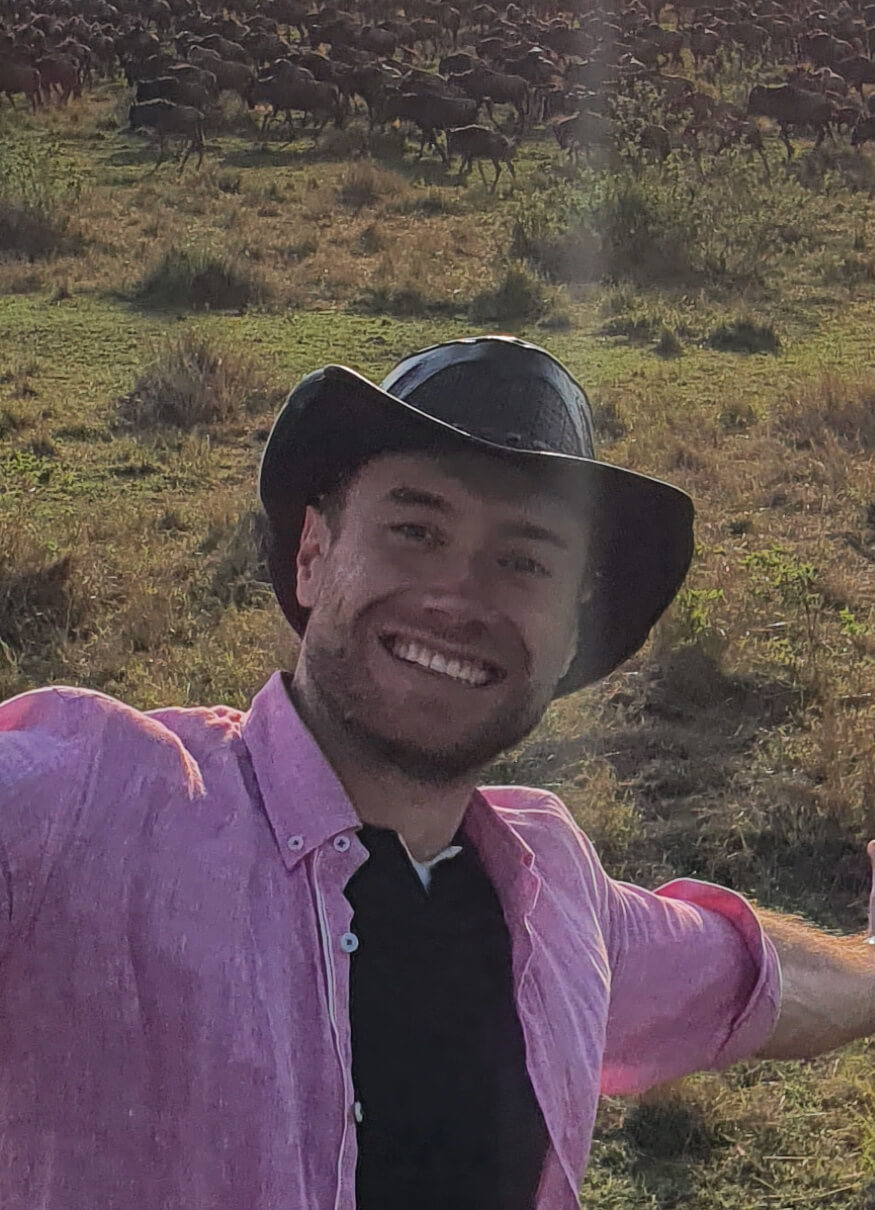


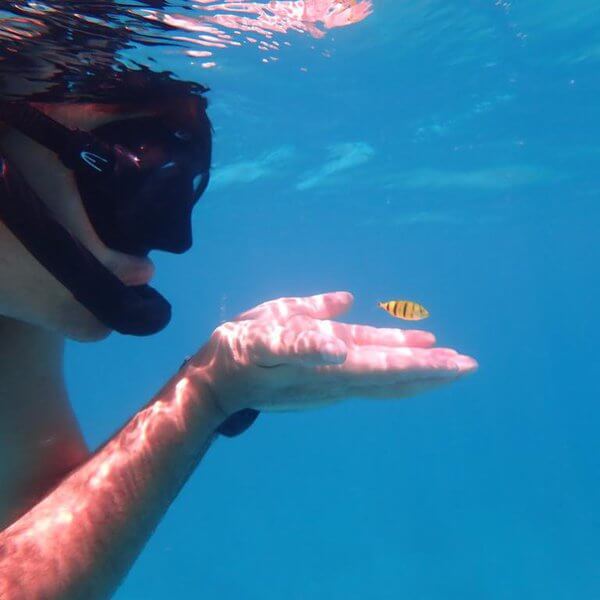













22 March 2024 9:48am
Hi @lucianofoglia
Thanks for sharing your thoughts with the community. What you've touched on resonates with a number of users and developers (looking at you @Rob_Appleby) who share similar concerns and are keen to address these issues.
As a beliver in open sourcing conservation technologies, to mitigate issues you've noted (maintenance of technologies / solutions, repairability, technical assistance to name but a few), really the only way to achieve this in my eyes is through the promotion of openness to enable a wide range of both technical and non-technical users to form the pool of skills needed to react to what you have stated. If they can repair a device, or modify it easily, we can solve the waste issue and promote reusability, but first they need access to achieve this and commerical companies typically shy away from releasing designs to protect against their IP that they keep in house to sell devices / solutions.
I would think for an organisation to achieve the same the community would need to help manufacturers and developers open and share hardware designs, software, repairability guides etc, but the reality today is as you have described.
One interesting conversation is around a kitemark, i.e a stamp of approval similar to the Open Source Hardware Association's OSHWA Certification), but as it's not always hardware related, the kitemark could cover repairability (making enclosure designs open access, or levels of openness to start to address the issue). Have a look at https://certification.oshwa.org/ for more info. I spent some time discussing an Open IoT Kitemark with http://www.designswarm.com/ back in 2020 with similar values as you have described - https://iot.london/openiot/
You may want to talk more about this at the upcoming Conservation Optimism Summit too.
Happy to join you on your journey :)
Alasdair (Arribada)